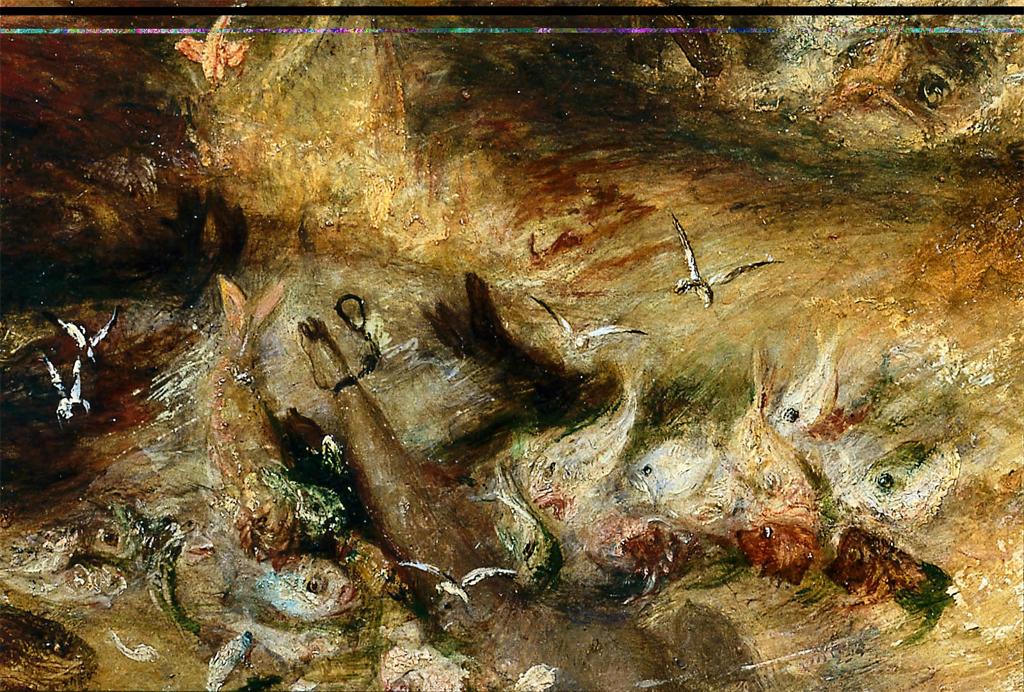The Romantic art movement in European art endured approximately sixty years, from the late eighteenth century until the middle of the nineteenth century.
This horrific image by the English artist Joseph Mallord William Turner betrays this artist’s engagement with the Romantic notion of the sublime, a concept that was largely influenced by Edmund Burke’s A Philosophical Enquiry into the Origin of Our Ideas of the Sublime and the Beautiful (1757). The sublime is related to the human instinct for self-preservation because it conjures up thoughts of terror and pain, yet it also inspires awe since it presents the power of nature and the power of God.
The terrifying story illustrated in The Slave Ship is a real event that occurred approximately sixty years earlier in 1781, when slavery was legal in the UK. That year, an English slave ship owner named James Gregson threw overboard all of the ill and dying slaves because he would not be able to collect insurance for them if they died, but he could collect money for lost “cargo.” The subject of the painting is not so much the story of the massacre but rather God’s wrath in the face of this tragedy. The sun swirls in the sky like a fiery comet as the typhoon begins. The ocean heaves with streaks of blood on the turbulent surface as the fish and birds feed on dead bodies. The bright, warm colors are not cheery, but rather hot and boiling. It is an intense scene about the power of an angry and disapproving God.
When Turner painted The Slave Ship, British vessels had the authority to intercept slave ships running to America, so it is possible that this painting was intended to support the abolitionist campaign to end slavery in America.
Sally Coleman | The Art Minute
Other paintings by J. M. W. Turner
[nggallery id=8]
Suggested Reading

